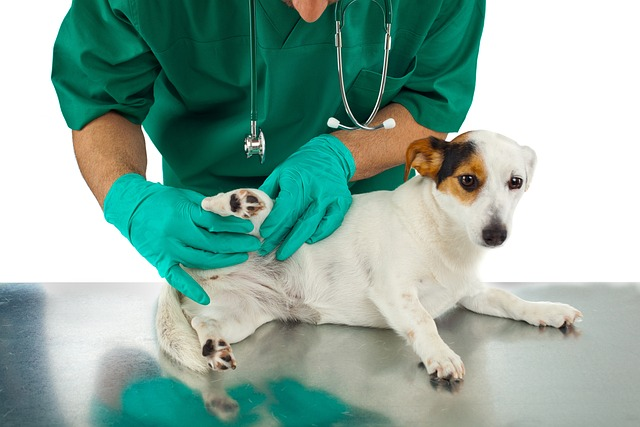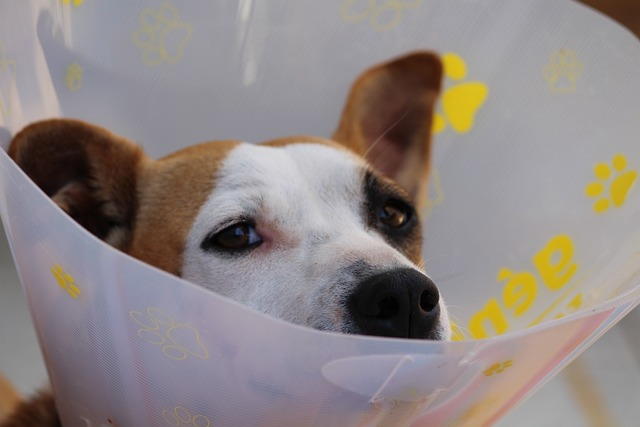
How To Know If Your Puppy Has Fleas (2024)
How to Know If Your Puppy Has Fleas
You’ve just brought home your adorable new puppy, and while you’re enjoying every moment of cuddling and playing, suddenly notice your little furball scratching more than usual. Could your puppy have fleas? “How to know if a puppy has fleas” is a common concern for new pet owners. Fleas are more than just an annoyance; they can pose serious health risks to your pet. In this blog post, we’ll guide you through the process of checking for fleas, understanding the dangers they pose, and differentiating between fleas and other skin issues. We’ll also discuss prevention and treatment options, as well as the importance of consulting your veterinarian. So let’s dive in and keep your puppy happy, healthy, and flea-free!
Short Summary
- Check your puppy regularly for fleas using a comb and looking closely at their lower back, tail, ears etc.
- Look out for signs of anemia or tapeworms to identify if they have fleas.
- Consult your vet for advice on prevention & treatment – use regular treatments, environmental control & allergy testing where necessary!
Identifying Flea Infestation in Puppies
Fleas are tiny, wingless parasites that feed on the blood of animals, including our beloved puppies. It’s crucial to check for them regularly because an infestation can lead to various health problems and discomfort for your pet.
But how do you identify a flea infestation on your puppy? There are two main methods: checking for adult fleas and searching for flea dirt and eggs. Catching an infestation early is vital, as it allows you to take action and prevent further health issues for your furry friend.
Checking for Adult Fleas
Adult fleas are small, dark brown or black insects that can be seen with the naked eye. They typically measure around 1/16 to 1/8-inch long and have a flat body. Fleas are a common external parasite and are known for their incredible jumping abilities, making them difficult to catch.
To check for adult fleas on your puppy, use a fine-tooth flea comb and gently comb through their fur close to the skin. Be sure to pay special attention to any flea bites on the lower back, tail, inner thighs, and groin area, as these are common hotspots for fleas.
If your puppy has fleas, you may see them caught in the comb, either crawling or jumping.
Searching for Flea Dirt and Eggs
Flea dirt is another sign of an outbreak. It appears as tiny, black, pepper-like specks on your puppy’s skin and fur, and it’s actually flea feces composed of digested blood. To distinguish flea dirt from regular dirt, place the suspect specks on a white paper towel and add a few drops of water. If the specks turn a reddish-brown color, it’s flea dirt.
Flea eggs, on the other hand, are tiny white ovals that can be found in your dog’s fur. They’re more difficult to spot than adult fleas or flea dirt, but finding them is a clear indication that your puppy has fleas.
The Dangers of Flea Infestations in Puppies
Flea infestations aren’t just uncomfortable for your puppy, they can also pose serious health risks. A heavy flea invasion can cause significant blood loss and potentially lead to anemia, especially in young puppies.
In addition, fleas can transmit tapeworms, which are visible in your puppy’s feces, around their anus, and on their bedding. Recognising the dangers of a flea problem and taking prompt action to treat them is critical for your puppy’s health and well-being.
Anemia and Blood Loss
Anemia is a condition characterised by a deficiency of red blood cells, which can result from fleas feeding on your puppy’s blood. In severe cases, anemia can lead to lethargy, weakness, and even death.
It’s crucial to monitor your puppy for any signs of anemia, such as pale gums, rapid breathing, or a rapid heartbeat. If you suspect your puppy is suffering from anemia due to a flea infestation or flea bites, consult your veterinarian immediately for proper diagnosis and treatment.
Tapeworm Transmission
Fleas can also transmit tapeworms to your puppy. Tapeworms are parasitic worms that live in your pet’s intestines and can cause various health problems, including weight loss, diarrhea, and irritation around the anus.
Puppies can become infected with tapeworms when they accidentally ingest an infected flea during grooming. The presence of tapeworm segments, which resemble small grains of rice, in your puppy’s feces, around their anus, or on their bedding is a clear indication of tapeworm infection.
If you suspect your puppy has tapeworms, consult your veterinarian for appropriate treatment or veterinary medicine.
Differentiating Between Fleas and Other Skin Issues
While fleas are a common cause of itching and scratching in puppies, other skin issues can cause similar symptoms. Allergies and mites can all lead to discomfort and irritation for your pet. It’s essential to accurately identify the cause of your puppy’s skin problems to ensure proper treatment and relieve their discomfort.
In this section, we’ll discuss how to differentiate between fleas and other common skin issues, such as dry skin and allergies.
Dry Skin vs. Fleas
Dry skin and flea infestations can both cause itching and discomfort for your puppy, but there are some key differences to help you tell them apart. Dry skin typically appears as white, stationary flakes on your puppy’s skin and fur, and may be accompanied by redness and inflammation.
Fleas are dark brown or black by colour. They crawl around and can be seen individually or in groups. By observing your puppy’s skin and fur closely, you can determine whether their discomfort is due to dry skin or a flea infestation.
Allergies and Mites
Allergies and mites can also cause itching and scratching in puppies, making it difficult to differentiate them from a flea problem. Allergies can be triggered by various allergens, such as pollen, dust mites, or certain foods, and can cause red, inflamed skin and excessive scratching.
Mites, which are tiny parasites that live on a dog’s skin, can cause intense itching, hair loss, and scabs. If your puppy’s skin problems persist despite flea treatment, consult your veterinarian for further evaluation and diagnosis of potential allergies or mite infestations.
Prevention and Treatment of Fleas in Puppies
The key to keeping your puppy flea-free is prevention and early intervention. Regular flea treatments and environmental control measures can help eliminate fleas or reduce the risk of flea infestations as well as prevent their return after home treatment.
If your home is heavily infested with fleas and home treatment methods aren’t effective, you may need to call a pest controller for professional assistance. In addition, consulting your veterinarian for advice on fleas and treatment is crucial to ensure your puppy’s health and well-being.
Regular Flea Treatments
A variety of flea treatments are available for puppies, including topical solutions, oral medications, and flea collars. Topical solutions are applied directly to your puppy’s skin and can help control both adult and immature fleas. Oral medications act quickly to kill adult fleas and can be given as needed or as part of a regular flea prevention plan.
Flea collars, such as the Toldi Flea and Tick Collar, provide long-lasting protection for several months. It’s essential to use flea treatments regularly and follow the product’s instructions to ensure your puppy remains protected from fleas.
Environmental Control
Controlling the environment is another crucial aspect of flea prevention and treatment. Fleas can survive in various environments, including your home, yard, and even on other animals. To control fleas in your home, use flea sprays on carpets, upholstery, and dog’s bedding. Regularly vacuum your home and wash your puppy’s bedding to help eliminate flea eggs and larvae.
For outdoor spaces, keep your yard clean and well-maintained, and consider using outdoor flea treatments to help control the flea population.
Consulting Your Veterinarian
When dealing with flea infestations, it’s essential to consult your veterinarian for guidance and advice. Your veterinarian can perform skin tests and allergy testing to determine the best flea prevention product for your puppy’s lifestyle and needs.
They can also provide recommendations on the most effective flea treatments and prevention strategies to keep your puppy healthy and flea-free. Regular flea checks and visits to your veterinarian are crucial for maintaining your puppy’s overall health and well-being.
Skin Tests and Allergy Testing
Skin tests and allergy testing are valuable tools for diagnosing flea allergies and other skin issues in puppies. These tests can help your veterinarian determine the cause of your puppy’s itching and scratching, enabling them to recommend the most appropriate treatment.
There are various types of skin tests and allergy testing, such as intradermal injections, patch tests, and skin prick tests. Your veterinarian can discuss the benefits and risks of these tests with you and help you decide which test is best for your puppy.
Choosing the Right Flea Prevention Product
Selecting the right flea prevention product for your puppy is crucial for ensuring their health and well-being. With so many options available, it can be overwhelming to choose the best product for your pet.
Your veterinarian can help you navigate the world of flea prevention products and recommend one that’s safe, effective, and suitable for your puppy’s needs and lifestyle. By working closely with your veterinarian and following their advice, you can help keep your puppy healthy, happy, and flea-free.
Summary
In conclusion, flea infestations in puppies are not only uncomfortable, but can also pose serious health risks, such as anemia and tapeworm transmission. It’s essential to regularly check for fleas, differentiate between fleas and other skin issues, and take preventive measures to protect your pet. Consulting your veterinarian for advice on flea prevention and treatment is crucial, as they can help you choose the right product for your puppy and ensure their overall health and well-being. By staying vigilant and proactive in your puppy’s flea prevention, you can provide them with a happy, healthy, and flea-free life.
Frequently Asked Questions
Is it common for puppies to have fleas?
Unfortunately, it is quite common for puppies to have fleas. Fleas love warm climates and the fur of a puppy, so they can easily hitch a ride and cause an infestation if proper precautions aren’t taken.
To prevent fleas from taking over your puppy’s fur, it is important to take preventative measures. Regularly grooming your dog’s coat, conducting a skin test and spotting if there are juvenile fleas present will all form a key part to flea protection.
How can I get rid of fleas on my puppy?
To get rid of fleas on your puppy, bathe them using a bowl of soapy water or shampoo, comb their hair with a fine-tooth flea comb, spray an apple cider vinegar solution on them, and regularly check their fur for fleas.
Additionally, you can use a white vinegar or lemon spray to kill the fleas and apply coconut oil infused with essential oils to repel them.
These treatments can help get rid of the fleas quickly, effectively and prevent re-infestation.






